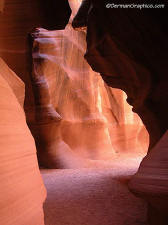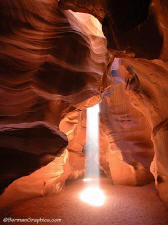Exposure Control with your Digital Camera when facing difficult
lighting conditions on one of a kind shots.
Iíve been traveling and shooting extensively with the Nikon CoolPix
5000 but have not found the time to really learn the ins and outs of the
exposure control. I rely on shooting on Auto and tricking the cameraís
metering to get proper exposure in difficult lighting situations. As an
experienced transparency shooter, I have always depended on bracketing to
capture my vision of the event Iím photographing. I do something very
similar with the CoolPix.
First of all, I treat shooting with a prosumer digital camera similar
to shooting transparencies in that I expose for the highlights and let the
shadows fall. Iím sure many of you have experienced the highlights blowing
out when metering an average scene. Especially if the sun (or any bright
light source) is in the picture. If the area of the scene that the camera
is basing itís metering on isnít the brightest area, the exposure will be
too light and wash out the part of the image containing the highlights. If
I were shooting transparencies, that washed out area would be properly
exposed in one of the darker bracketed images. What I do to trick my
camera into thinking itís looking at that bright area, is to recompose and
lock the exposure while centering the brightest area of the scene on the
LCD. Then I recompose again to my desired composition and shoot.
As an example, I was shooting the slot canyons in Antelope Canyon. I
was very nervous earlier that day and pulled out the camera manual to
study how to set the exposure manually so I could bracket. In actually
shooting, I found myself not having to bracket manually, but to point my
camera up at the opening of the slots and locking that exposure which
enabled me to properly expose for the fine detail off the inner walls. But
don't confuse this technique with the picture of the sunlight beam coming
down. That was shot on Auto and exposed properly by the camera because the
brightest area was already centered in the image.
Between shooting my modified exposure and the actual exposure the
cameraís metering system gave me, I was bracketing, just as if I were
shooting transparency film.
A tripod is a must for pictures like these, as I recommend with all
important pictures. Also, use of a flash is not recommended as it will
blow out all the subtle textures and detail on the canyon walls. Not to
mention it will screw up the time exposures of all the other
photographers.



